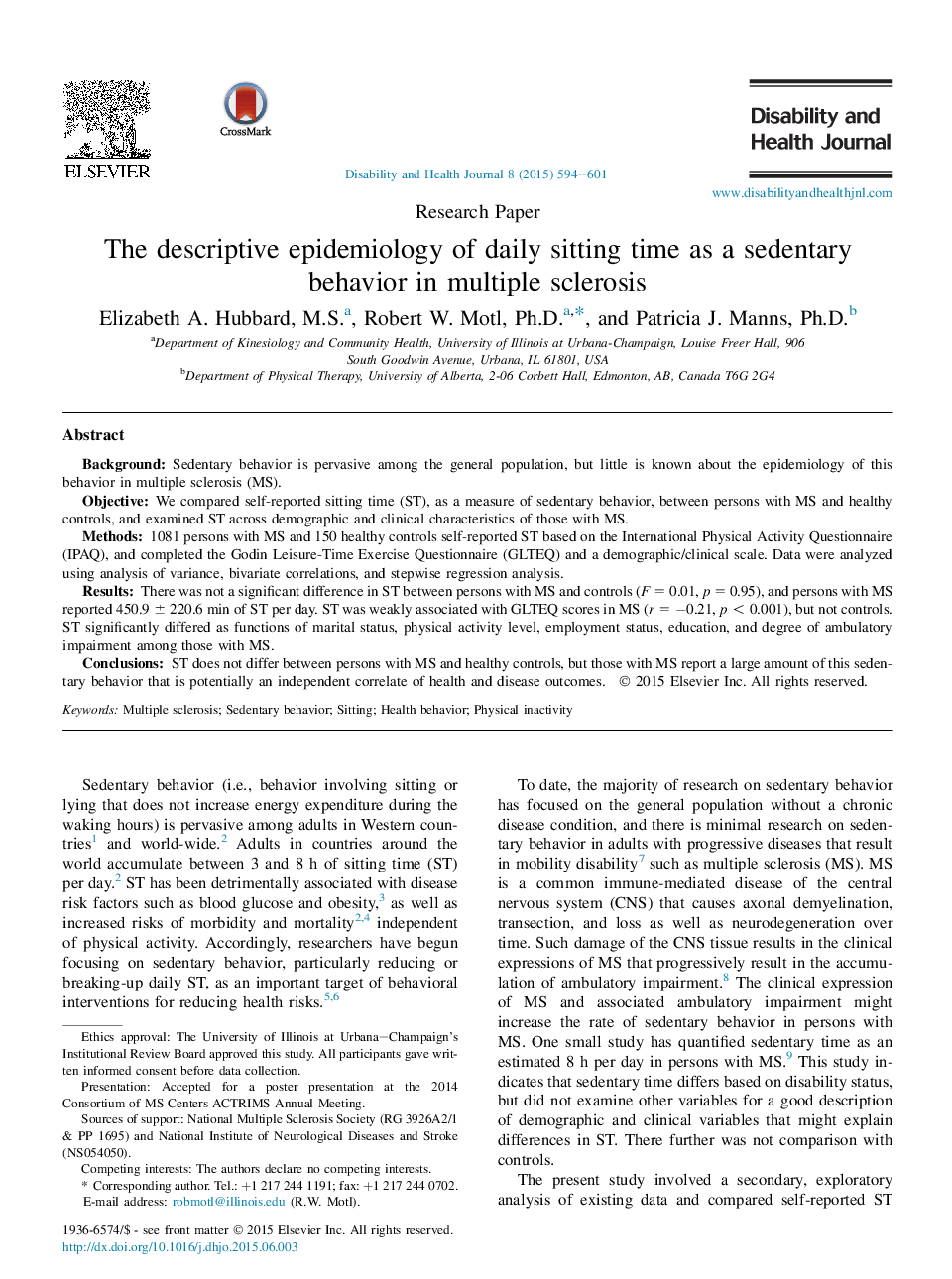| Article ID | Journal | Published Year | Pages | File Type |
|---|---|---|---|---|
| 6238846 | Disability and Health Journal | 2015 | 8 Pages |
BackgroundSedentary behavior is pervasive among the general population, but little is known about the epidemiology of this behavior in multiple sclerosis (MS).ObjectiveWe compared self-reported sitting time (ST), as a measure of sedentary behavior, between persons with MS and healthy controls, and examined ST across demographic and clinical characteristics of those with MS.Methods1081 persons with MS and 150 healthy controls self-reported ST based on the International Physical Activity Questionnaire (IPAQ), and completed the Godin Leisure-Time Exercise Questionnaire (GLTEQ) and a demographic/clinical scale. Data were analyzed using analysis of variance, bivariate correlations, and stepwise regression analysis.ResultsThere was not a significant difference in ST between persons with MS and controls (F = 0.01, p = 0.95), and persons with MS reported 450.9 ± 220.6 min of ST per day. ST was weakly associated with GLTEQ scores in MS (r = â0.21, p < 0.001), but not controls. ST significantly differed as functions of marital status, physical activity level, employment status, education, and degree of ambulatory impairment among those with MS.ConclusionsST does not differ between persons with MS and healthy controls, but those with MS report a large amount of this sedentary behavior that is potentially an independent correlate of health and disease outcomes.
